(As told to Alan Mitchell by Leon White – September 2021)
I recall one of the movie serials had a scene with a Forest Ranger speeding in the woods, down a one-way dirt road. My father was the City’s Water Superintendent at the time. Gene was known for making regular trips into the hills to check on and maintain the City’s pumping station. In those days, that meant taking a dirt road off the old Hwy 101. He drove a battered 1938 Ford pickup. The one-way road to the north fork of Hubbard Creek was dirt. That road wound its way through the forest, up and down all the way. Pat Masterson was in the audience the night I saw the movie. When Pat saw the Forest Ranger speeding through a forest, he humorously yelled out “There goes Gene White!” The audience loved it!
LEON WHITE REMEMbERS THE COLONIAL thEATRE
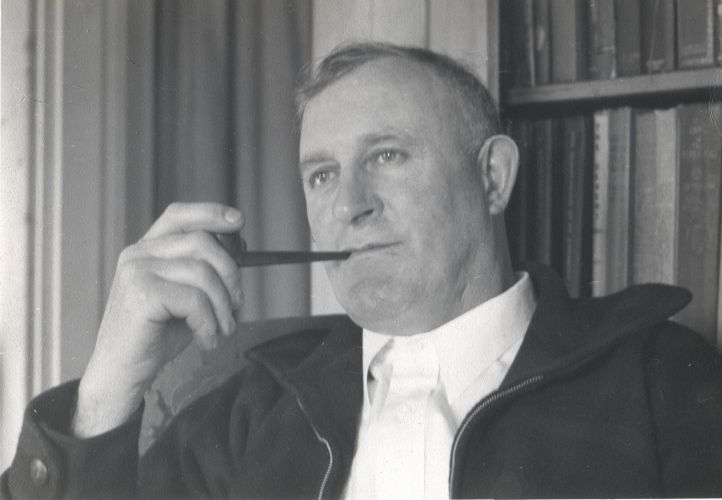
The Colonial Theatre’s Box Office fronted the sidewalk. You would buy your ticket and enter the Lobby. When I first started going, there was no popcorn, candy or soda pop available. Eventually during the late 1940’s, the theatre lobby had popcorn to purchase and a candy machine. The popcorn bag was small, about the size of 20 oz. drinking glass.
We (Me, Mama, Sister) had our favorite seats. We always sat on the left side of an aisle. I was next to a wall, then Mama and then Annette. Mrs. Lola Windmaiser was the Theatre Manager. Before each showtime, she and Mama (Pearl) would exchange pleasantries.
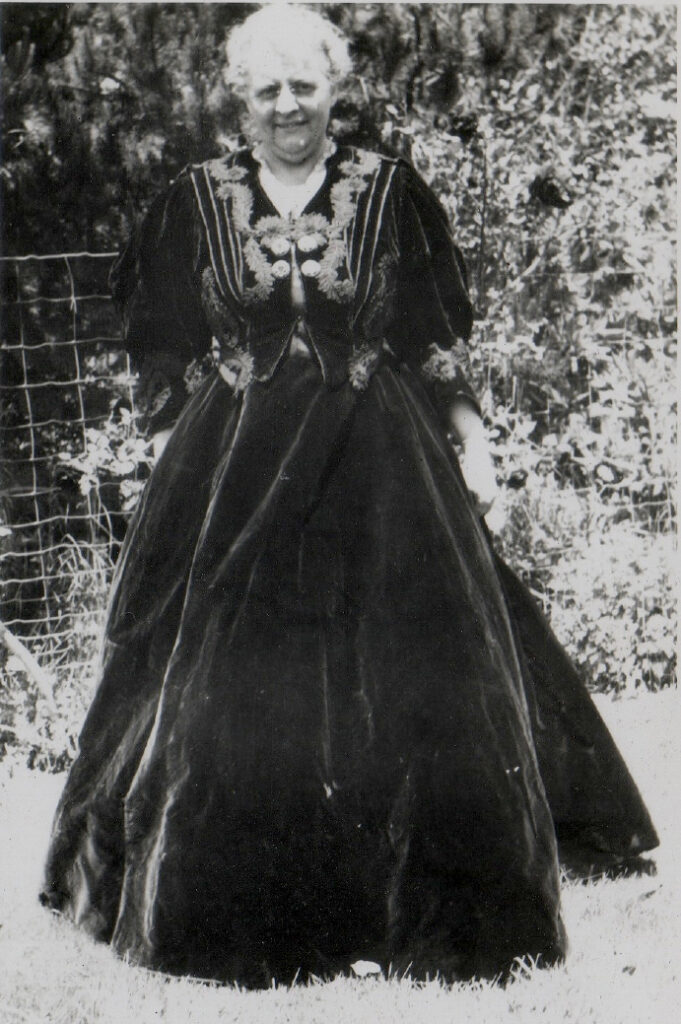
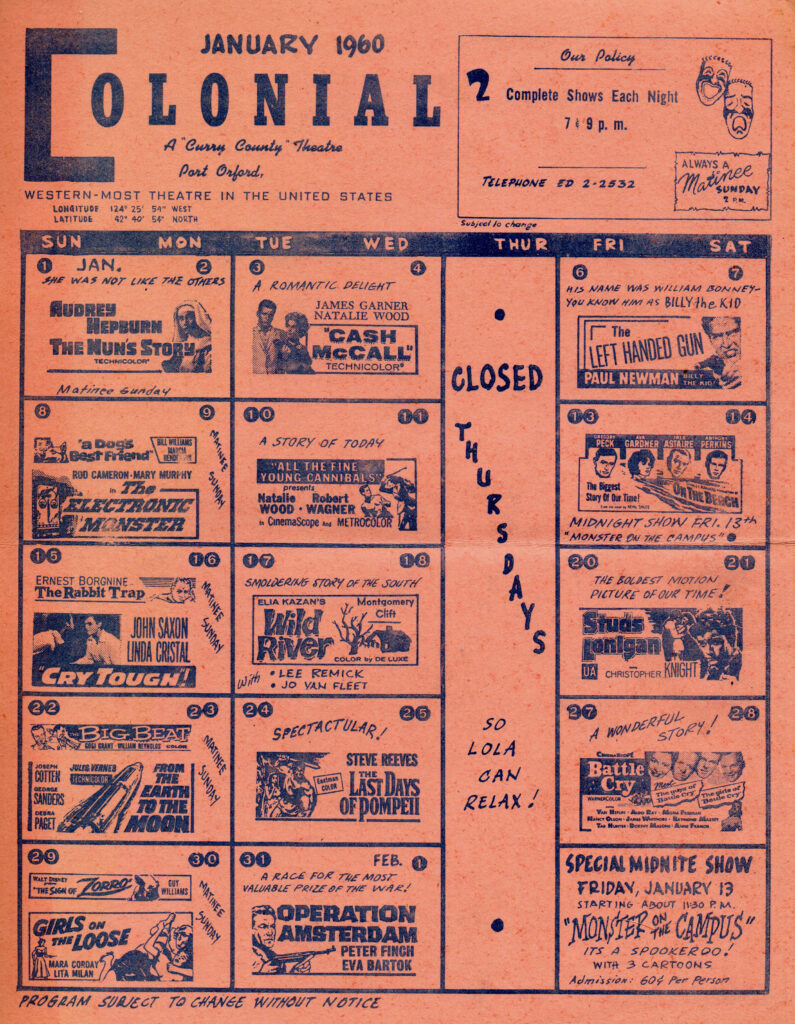
“Closed Thursdays, So Lola Can Relax!”
The seating was on either side of an aisle that went down the middle. The concrete floor was carpeted. The few light fixtures on the walls had tree-shaped screens in front of them. This meant the lighting was very subdued.
Looking up towards the stage yoLooking up towards the stage you could see on the wall two unique Seascapes. Each was a blend of three layers of painted scenery. They were high to the left and right of the stage respectively. The left one showcased Battle Rock. Surf breaks on the beach. Humbug Mountain prominently appears in the background. The right one showed the Port Harbor with its dock nestled against the base of Graveyard Point. There was no breakwater. A lumber steamer is being loaded. The ship’s starboard side is tied to the dock. There is open ocean to its port side. Humbug Mountain appears way off in the distance.
The theatre had a huge projection screen. Immediately in front of the screen was a mechanized dark maroon curtain. There was a small stage in between the curtains and the theatre seating. When the audience heard the sound of the curtain’s motor they knew they had to get seated.
Before the feature movie began, you would be shown a newsreel, a couple of cartoons, sometimes a travelogue, and at least two ‘Coming Attractions’. During the mid-1950’s advertisements for businesses in Coos County began to appear.
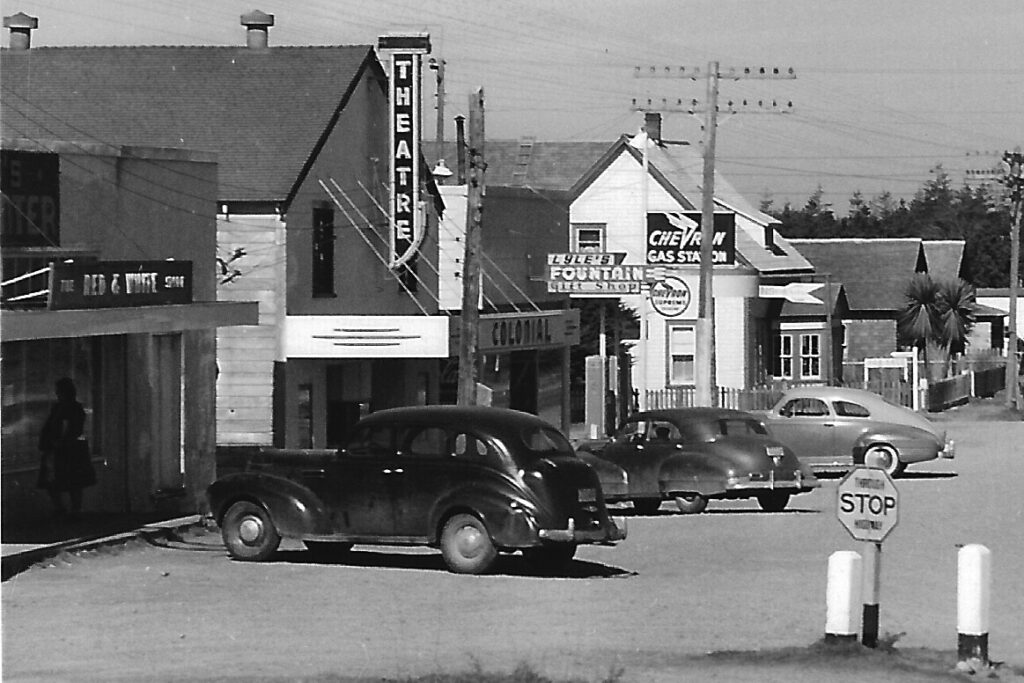
One day I learned the hard way that having a front row seat was not a good idea. My whole school had gone to see a movie and were assigned the front row of seats. After having to look almost straight up during an entire movie, I made sure that painful experience never happened to me again!
During the Winters before Bonneville Power was available power outages were frequent. There were times when we would only get to see part of a movie. Because there were no refunds, everyone would sit in the dark with their flashlights and wait patiently. If the outage lasted more than an hour, we were escorted out and sent home.
Including the cartoons, newsreels and previews that ran at the beginning of a movie, most movies ran about 1 and 3/4 hours. We needed to be seated by 7:00pm and expected to be leaving by 9:15pm.
During the early years, the theatre seats were all wood, with seat backs shaped for comfort. Padded seats weren’t introduced until the late 1940’s. Behind the curtains near the stage, there was a phonograph used to play 33 RPM Strauss Waltzes. I don’t recall when it happened, but someone came up with the idea of hanging a see-through curtain in front of the projection screen. It may have been needed to protect the screen, but I thought it greatly reduced the viewing quality.
From 1935 through 1939, there were very few big picture Technicolor movies, and from 1940 to 1945, most of the comedies were still in black and white.

A lot changed for the beA lot changed for the better after the war. For instance the major movie companies were now creating orchestra arrangements not only for their Musicals, but also for the background for their movies. We now take it for granted, but I remember in my younger days how impressed I was with how a musical score could be crafted to enhance the different emotions and moods of each story. It was amazing what a difference it made and really added to my movie experience.
Some of the comedies, and all of the Some of the comedies, and all of the Musicals, Pirate movies and quite a few Westerns were now in color. Westerns and Pirate movies, with their sweeping outdoor vistas were ideal for Technicolor. The beauty of the ocean shown in the Pirate movies made a big impression on me. Living as I was by the ocean all my life, it was really good to see the Hollywood version of the beautiful Pacific Ocean just across the street and down the hill from the front door of my childhood home.
During the 1948-50 time peDuring the 1948-50 time period, movie companies made some biblical-based movies. The movies were not too accurate if you had read what the Bible actually said, but the plots were entertaining, the action in color, and everything was spectacularly presented.

Cars L-R: ’48 Dodge; ’46 Ford; ’40 Chev; ’41 Pontiac Streamliner; and ’47 Pontiac
Eventually by the early mid-1950’s there was an effort to give audiences something different. Big movie companies began to again show their movies in small towns like ours. Only MGM, the biggest movie company, had not cut off supplying its movies to small theatres. I remember a couple of 3-D movies that were shown without 3-D glasses (I have no idea why 3-D glasses were not available). When there were scenes with something being thrown towards the camera, all the audience could see was a blur! I was not impressed.
When the Colonial Theatre began showing Wide-Screen movies, the first ones were in “Cinemascope”. I found them interesting, but much of the time the people on the screen just looked spread out. Again, I was not impressed.
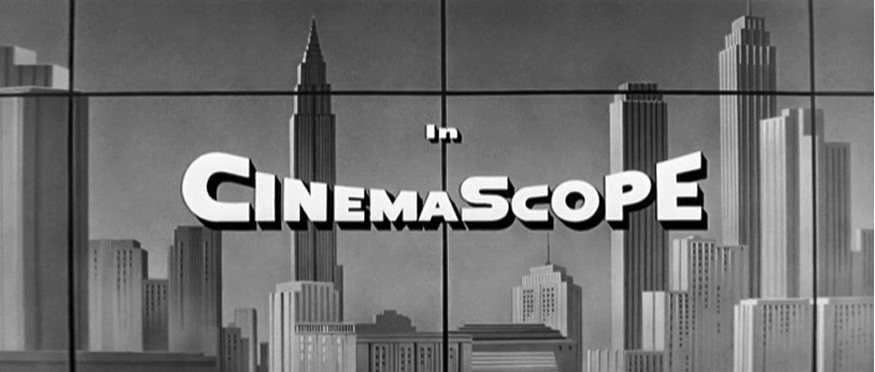
Twice I saw local talent give stage shows in front of the projection screen. The shows were a mixture of musical numbers and comedy presented by one person at a time. One of them was a mini-version of the Broadway productions we saw in the movies.
In 1949, nearly all the major movie companies had stopped showing their movies in smaller towns. MGM had been the exception. Thankfully, by 1953 all the big movie companies were back. But, then Television had arrived and begun eating into their audiences. My own Family was no exception. After my Family got its first TV set in 1956, we rarely went to movies. By the end of 1960, we were totally out of the habit of going to the movies.
Critics now say the year of I939 is said to have had the most classic movies. They also agree that Hollywood’s Golden Years began in the late 1930’s and ran until the late 1950’s. By having been born in 1937, I was lucky enough to be around to see a great number of them.

(P.S. During my movie going days, unless it was a serial, every movie closed with the crisp words: “The End”.)
See Also: The Port Orford Movie Theatre


Carren Copeland
Thanks, love the history. Started going to this movie theater in 1980’s until it closed. Miss it a lot
linda
My grandmother lived behind the theatre Josie Forty …I can remember my grandmother and my aunt Myrtle Forty going to a movie and talking all the way through it…..this was nearly every Friday…….then I got older and got .50 to go by myself…..Lola encouraged good posture she would whop you alongside the head if you had your knees up on the seat ahead of you or worse yet you were holding hands with someone…..she was like a patrolman. Those were the days